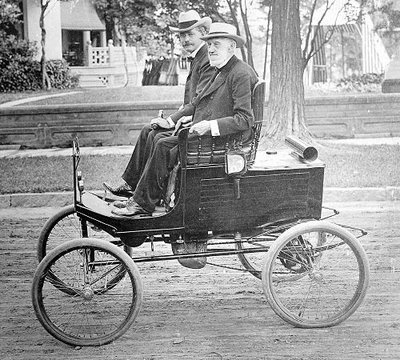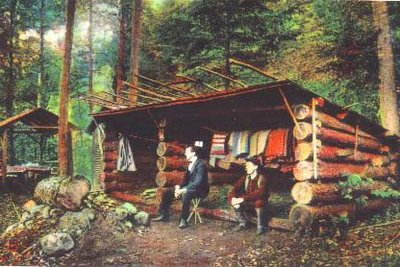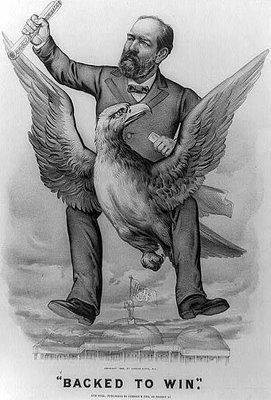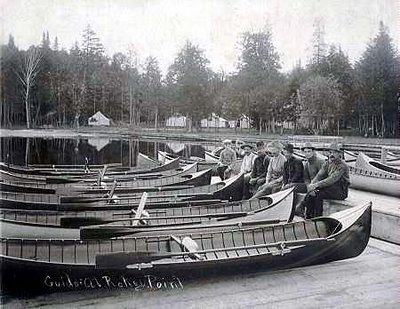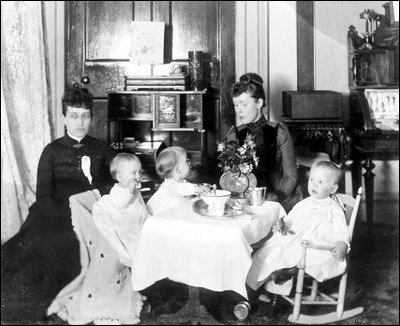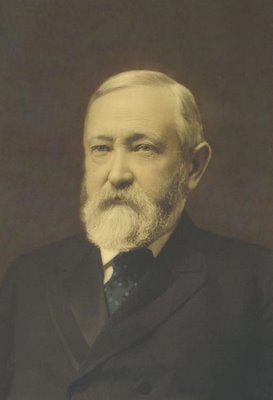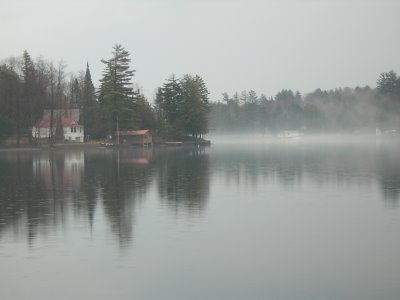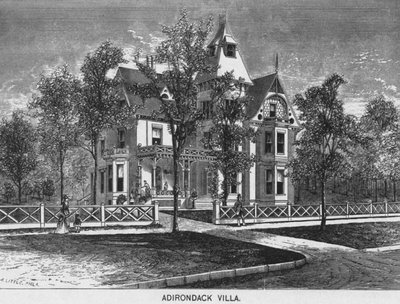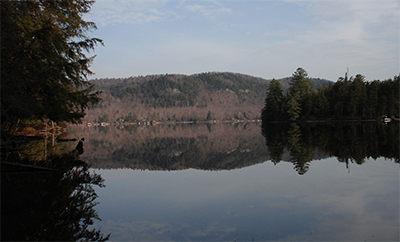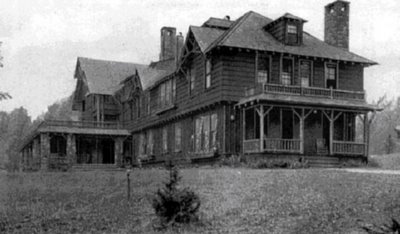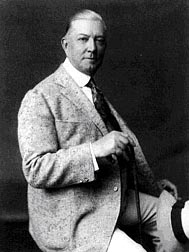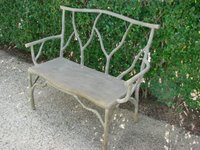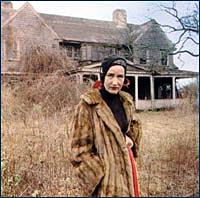Sunday, November 26, 2006
An Angry Adirondack Almanack Note To NeighborsWe've had enough. Regular readers know that the Almanack has never been one keep its opinions to itself - today is no exception. It all started about two months ago. We heard there was a new Adirondack blog -
Adirondack Boys. Sure we thought the name was a little strange given that it obviously wasn't being written by two boys, but hey, the Adirondack Almanack is on record for supporting alternative lifestyles. Anyway, we dutifully added the new Adirondack blog to our blogroll and subscribed via
Bloglines to the RSS feed. We were amazed by the pace the new blog was setting, sometimes daily posts ran into the dozens - in a short two months the new blog had posted nearly 200 times! Just short of the Almanack's total post count of almost two years! We know what you're thinking - well a lot of those posts have to be really crappy - who could possibly post that much on intelligent, informative, engaging, and/or entertaining topics and still have a life - still have a job. We thought the same thing too.The posts
started nicely enough, mostly the history of Penwood (Old Forge), where the Adirondack Boys have recently had a home built for them. All was well for a while, until, perhaps inevitably given the pace of posting, the posts started turning to other subjects and, well, frankly, began pissing us off.For several weeks the Almanack held a regular internal debate about the new blog. The Almanack doesn't always agree with even our
favorite bloggers, and we don't always have to comment on a bad post or two. The Almanack encourages conflicting viewpoints, alternative ideas, even the downright outlandish. The Almanack doesn't want to be mean. The Almanack wants friends in the blog world and wants to encourage Adirondack blogs. Today however, the insults aimed at locals reached a crescendo and if there is one thing we can't stand it's hypocrisy: don't believe one thing and support the exact opposite just because it fits your social milieu more appropriately. If you worship the devil at night in the woods, don't send money to evangelical TV preachers and sell bibles on the side.If you
write the following:
The young, hormone-rich bodies of the two fourteen-year-old boys sent signals to Mark and Tad that urgently needed translating. Their conversations, normal verbal communication, in the fresh, Adirondack air, by the lake and in the sun, and at night, definitely at night, were subsumed by a much more powerful chemical communication exchanged between them through the air, in a language neither understood and neither could control.
You are being a hypocrite, of the
Mark Foley variety, when you revel in the "magical" quality of the Bush oligarchy and
are proud of your role in propagating its lies and hypocrisies. Boys, in case you've been living in your own fantasy-land since the days your hormone rich fourteen-year-old bodies shared that cigarette - Republicans are opposed to you and your lifestyle. Today's Republicans have been, and still are, leading the charge to make your lifestyle illegal. When you smoke pot and work for the DEA, you are a hypocrite - plain and simple.Even that hypocrisy, however, didn't make us mad enough to write this missive. People make mistakes in life and sometimes they are painful to others - sometimes painful to others who even share their same values. We make mistakes here at the Almanack - maybe this post is one of them - but we try to have the self-awareness to understand our mistakes rather than revel in them. Still, mistakes don't warrant a harangue on the level being issued here. There were other things that we didn't like, and we didn't find all that important to comment on. But today -
today - was the last straw.Today's post started like this:
The single largest change for us since we built our house was being able to experience life in the Adirondacks all year, rather than just the months between Memorial Day and Labor Day. During the past two years, we have been in town most weekends, from the muddiest days of Mud Season to the buggiest days of Bug Season. And yet we're "summer people", and that's all we'll ever be.
Fine.... ok... I'm with ya... then we got this:
Like most communities dependent on seasonal residents, Old Forge's population grows exponentially during the warm months, a time when the divide between summer people and locals is at its deepest. Summer people have their own restaurants, their own activities and their own social networks. Locals have theirs. It is rare to see summer people and locals mingling for any reason other than business. It works like this: locals run the businesses in town, service seasonal camps, manage construction and do odd jobs; summer people write the checks and hope the work gets done someday.
Ah... what.... hold it just a minute - "dependent on seasonal residents" - so the people of Old Forge are dependent on you - not you on them?"Summer people have their own restaurants, their own activities and their own social networks. " - Really? who the f*&# do you think owns, runs, washes the dishes in, takes out the garbage for, squashes the garbage at the town transfer station for, pumps the septic tank for, repairs, maintains, washes, builds, and who the hell knows what else? Summer people?"It is rare to see summer people and locals mingling for any reason other than business. " WRONG it is rare to see rich people and poor, or middle class (such as they are), people mingling, mostly because the rich think they have their own life which is separate from the mostly poor who surround them. The truth is that summer people and year-round residents mix all the time in every business in town where services are shared, in every pub that doesn't charge $4 for a beer. You see, the vast majority of people in the Adirondacks did not grow up in a rich family, or even on a lake, they didn't attend (and can't afford to send their kids now) to
expensive prep schools, most probably don't hire people to help them as much as they do it themselves. Most summer people spend their vacations here - in trailers, small camps, far from the lakes which are largely owned by the rich. They don't get to
go to Paris, EVER. They don't have dogs that
require regular spa visits. Most year-long residents have probably - gasp - never been to a spa in their lives, never mind their dogs. When friends of ours were recently married, there was a collection to pay for a professional to do the bride's hair!
It works like this: locals run the businesses in town, service seasonal camps, manage construction and do odd jobs; summer people write the checks and hope the work gets done someday.That comment to so degrading that it only needs to be shared here again without comment. No, that's wrong, it does deserve comment. Hey assholes! We are not only your servants! We have lives, aspirations, friends (rich and poor), we also need to write checks... and when we do, it has meaning beyond the "hope the work gets done," meaning like, I'll have to work extra this year, or I'll have to cut down on this or that. According to the
census, poverty in New York is up to nearly 15 percent! The county your magnificent Penwood is located in is one of the poorest in the state!
When our construction project was first underway, we decided to invite the crew to drinks one Friday afternoon. All of our corporate management training was working against us here. We had been trained to believe in the value of "team-building" activities designed to foster good communication and to set projects in motion on the best possible terms. Full of resolve to develop a good working relationship with the crew, we went to the store and bought all manner of beer, nuts, chips and dips. We arranged it all carefully on the porch of the old camp, interspersing iced buckets full of beer and platters of food so as to optimize the party's flow. We thought about topics of conversation our guests might enjoy, even a toast to express our gratitude to everyone for helping us to realize our dream of a house. Everything was ready, and everyone was invited.
How magnanimous, you invited everyone! Is that what you have
at your parties at Penwood? Beer, nuts, chips, and dips? Did they get to enjoy the Stickley? And just a little note here - they didn't help you realize your dream, they realized it for you, since you had neither the skills nor the willingness to learn for yourself how to realize your own dreams.
And yet no one came. As five o'clock approached, we began to notice the din of work dying down. Then the ignition of the cars. Then the cars speeding away. We rushed down to the building site in hopes of gathering some of the remaining crew and found no one. Feeling a bit foolish and offended, we learned a painful lesson that day. The crew was happy to work on the house but not happy to work on any kind of relationship with us. To them, we represented the Other. We were summer people, and that's all we would ever be.No, you represent yourselves, and you didn't care enough about the people working for you to even consider that they might not want to extend their workday by entertaining more of your needs. Our guess is those workmen - far from being "happy to work" - had to pick up their kids, make dinner, get to the evening side-job they are doing to make ends meet, do their own work at home, or any number of things that were more important than making you feel more welcome for free. Probably a few went out to a local pub to buy their own drinks and eat free pretzels, and not have to be condescended to by you.When our friend the Stone Mason recently finished a big job with only one helper he didn't gather some chips and beer and make his assistant stay late to enjoy them with him - he gave him two weeks paid vacation. It wasn't part of the deal, he can't afford to pay a better wage let alone a paid vacation for himself or his helper. But, it was the most meaningful gift between men who understand what their common needs are.You can blame "the crew" all you want for not doing what you wanted them to do - but odds are, that every one of those men know some rich and /or summer folks who they've stayed and enjoyed that beer with - you should stop blaming them and ask yourself why it wasn't you.The Almanack encourages you to stop thinking you're special, more worldly, more educated, or know more about how our homes should be decorated. Try instead to think about your place of privilege and the opportunities for true benevolence you've apparently squandered heretofore. Find out the names of the men who built your dream - and buy them all a week's paid vacation - or two. Certainly your dream house on a lake in the Adirondacks is at least worth the cost of a little time off for the men who made it happen - use your wealth to buy them an opportunity to spend some time dreaming their own dreams.
Price to pay twenty workmen a week's paid vacation - about $12,000. Respect of your new neighbors - priceless.
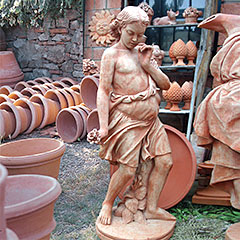 Siebert and Rice makes the best terra cotta urns, vases and garden statuary. Their website is not very buyer-friendly, since you need to email them to obtain a price list and cannot order directly from the website. However, their annual sale is this weekend in Somerset, New Jersey. Their wares are among the best, highest quality terra cotta we have seen. They are made in Italy using time-tested techniques by skilled craftsmen. And they are frost-proof, so good for those cold Adirondack winter days and nights. Check out the website at www.siebert-rice.com. The details of the sale are as follows:
Siebert and Rice makes the best terra cotta urns, vases and garden statuary. Their website is not very buyer-friendly, since you need to email them to obtain a price list and cannot order directly from the website. However, their annual sale is this weekend in Somerset, New Jersey. Their wares are among the best, highest quality terra cotta we have seen. They are made in Italy using time-tested techniques by skilled craftsmen. And they are frost-proof, so good for those cold Adirondack winter days and nights. Check out the website at www.siebert-rice.com. The details of the sale are as follows:

